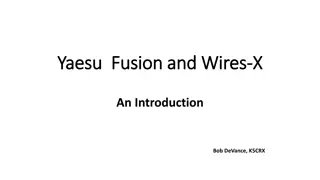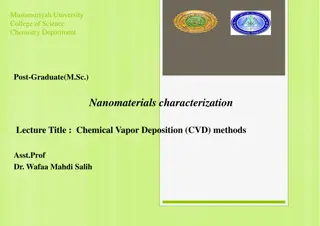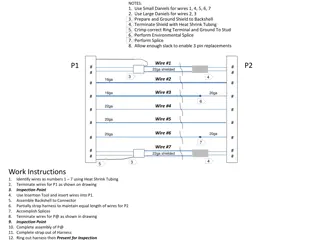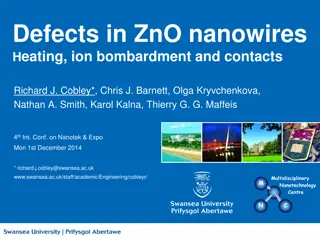Understanding Quantum Wires and Nanowires: Properties and Applications
Quantum wires, quantum dots, and nanowires are essential components in nanotechnology due to their unique properties and applications. Quantum wires are one-dimensional systems with restricted electron movement, while quantum dots are zero-dimensional, limiting electron movement in all dimensions. Nanowires, on the other hand, are ultra-fine wires with potential in data storage, nanodevices, and more. They can be made from various materials like silicon and gallium nitride. Understanding their properties and applications is crucial in advancing nanotechnology.
Download Presentation

Please find below an Image/Link to download the presentation.
The content on the website is provided AS IS for your information and personal use only. It may not be sold, licensed, or shared on other websites without obtaining consent from the author. Download presentation by click this link. If you encounter any issues during the download, it is possible that the publisher has removed the file from their server.
E N D
Presentation Transcript
Quantum well, Quantum Wire, Quantum dot Dr. Raouf Mahmood
Quantum well It is a two dimensional system The electron can move in two directions and restricted in one direction. Quantum Wire It is a one-dimensional system The electron can move in one direction and restricted in two directions. Quantum dot It is a zero dimensional system The electron movement was restricted in entire three dimensions
Why called Quantum ? Because, the electronic property is quantized The spatial distance is very very small
substrate Semiconductor growth (single layer)
Quantum wire Quantum wires are ultra fine wires or linear arrays of Nano dots, formed by self-assembly They can be made from a wide range of materials such as Semiconductor Nanowires made of silicon, gallium nitride and indium phosphide. Nanowires have potential applications in 1. In high-density data storage, either as magnetic read heads or as patterned storage media 2. In electronic and opto-electronic Nanodevices, for metallic interconnects of quantum devices and Nanodevices. Nanowires can be prepared by growth techniques such as 1. Chemical Vapour deposition (CVD) 2. Electroplating
Quantum wire cont In quantum wire, Two dimensions are reduced and one dimension remains large Therefore, the electrical resistivity of quantum wire can be calculated using conventional formula as follows, We need two dimension to calculate area of conducting material, but not present in quantum wire
General properties of Nanowire Diameter 10s of nanometers Single crystal formation -- common crystallographic orientation along the nanowire axis Minimal defects within wire Minimal irregularities within nanowire arrays Some example of Nanowire
Magnetic nanowires Example: Cobalt, gold, copper and cobalt-copper nanowire arrays Important for storage device applications Electrochemical deposition is the fabrication technique <20 nm diameter nanowire arrays can be fabricated by electrochemical deposition http://www.trnmag.com/Nanowires%20Array%20Story.jpg Cobalt nanowires on Si substrate (UMass Amherst, 2000)
In quantum dot all the three dimensions are reduced to zero Quantum dot























